I am trying to find a reliable testing method to compute the error of my model / training parameters, but I am seeing weird results when I play with the train/test ratio.
When I change the ratio of my train/test data, the RMSE converges towards different values, see below:

You can see the test ratio on the top-right corner.
After 50K iteration, it doesn't converge towards the same value.
Here is the code:
import time
import sys
import numpy as np
import pandas as pd
import seaborn as sns
import matplotlib.pyplot as plt
from sklearn.linear_model import Lasso
from sklearn.model_selection import train_test_split
from sklearn.utils import shuffle
np.random.seed(int(time.time()))
def seed():
np.random.randint(2**32-1)
n_scores_per_test = 50000
test_ratios = [.1, .2, .4, .6, .8]
model = Lasso(alpha=0.0005, random_state=seed(), tol=0.00001, copy_X=True)
# load our training data
train = pd.read_csv('train.csv')
X = train[['OverallCond']].values
y = np.log(train['SalePrice'].values)
# custom RMSE
def rmse(y_predicted, y_actual):
tmp = np.power(y_actual - y_predicted, 2) / y_actual.size
return np.sqrt(np.sum(tmp, axis=0))
for test_ratio in test_ratios:
print 'Testing test ratio:', test_ratio
scores = []
avg_scores = []
for i in range(n_scores_per_test):
if i % 200 == 0:
print i, '/', n_scores_per_test
X_train, X_test, y_train, y_test = train_test_split(
X, y, test_size=test_ratio, random_state=seed())
model.fit(X_train, y_train)
y_pred = model.predict(X_test)
scores.append(rmse(y_pred, y_test))
avg_scores.append(np.array(scores).mean())
plt.plot(avg_scores, label=str(test_ratio))
plt.legend(loc='upper right')
plt.show()
Any idea why they don't all converge nicely together?
See https://github.com/benji/rmse_convergence/
UPDATE:
- Use selection=random for Lasso
- using random_state in Lasso
- using random_state train_test_split
- removed redundant shuffle()
- setting low tol on Lasso model
